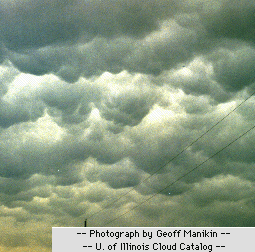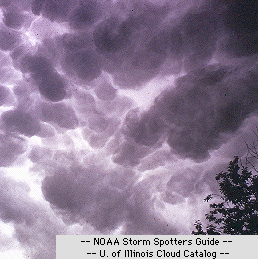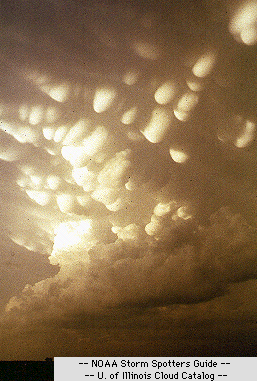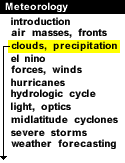
|
Mammatus are pouch-like cloud structures and a rare example of clouds in sinking air.

Photograph by: Manikin |
Sometimes very ominous in appearance, mammatus clouds are harmless and do not mean that a tornado is about to form; a commonly held misconception. In fact, mammatus are usually seen after the worst of a thunderstorm has passed. |
As updrafts carry precipitation enriched air to the cloud top, upward momentum is lost and the air begins to spread out horizontally, becoming a part of the anvil cloud. Because of its high concentration of precipitation particles (ice crystals and water droplets), the saturated air is heavier than the surrounding air and sinks back towards the earth.
The temperature of the subsiding air increases as it descends. However, since heat energy is required to melt and evaporate the precipitation particles contained within the sinking air, the warming produced by the sinking motion is quickly used up in the evaporation of precipitation particles. If more energy is required for evaporation than is generated by the subsidence, the sinking air will be cooler than its surroundings and will continue to sink downward.

Photograph by: NOAA |
The subsiding air eventually appears below the cloud base as rounded pouch-like structures called mammatus clouds. |
Mammatus are long lived if the sinking air contains large drops and snow crystals since larger particles require greater amounts of energy for evaporation to occur. Over time, the cloud droplets do eventually evaporate and the mammatus dissolve.

Photograph by: NOAA |
Mammatus typically develop on the underside of a thunderstorm's anvil and can be a remarkable sight, especially when sunlight is reflected off of them. |

billow clouds |
|

orographic |





